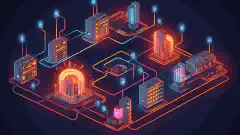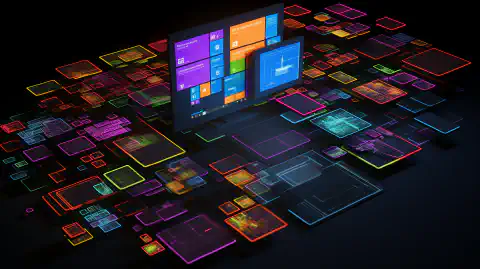Networking Basics: Understanding Switches, Routers, Gateways, Subnets, Firewalls & DMZs

Table of Contents
Introduction
In the ever-evolving world of technology, networking plays a crucial role in connecting devices and enabling communication. Understanding the basics of networking is essential for both IT professionals and individuals seeking to expand their knowledge. This article aims to provide a comprehensive overview of key networking components, including switches, routers, gateways, subnets, firewalls, and DMZs. By the end, you’ll have a solid understanding of these concepts and their importance in building reliable and secure networks.
Switches: Enhancing Local Area Network Performance
A switch is a networking device that operates at the data link layer of the OSI model. It connects multiple devices within a local area network (LAN) and facilitates the exchange of data packets between them. Unlike hubs, which simply broadcast data to all connected devices, switches intelligently forward packets only to their intended recipients. This enhances network performance by reducing collisions and congestion.
Some key features and benefits of switches include:
- Port-based forwarding: Each port on a switch is assigned a unique Media Access Control (MAC) address, allowing it to deliver packets directly to the intended device.
- Virtual LANs (VLANs): Switches support VLANs, which enable network segmentation and improved security by isolating traffic between different groups of devices.
- Quality of Service (QoS): Switches can prioritize certain types of traffic, ensuring that time-sensitive applications such as voice or video receive sufficient bandwidth.
Routers: Connecting Networks and Enabling Internet Access
While switches operate within a LAN, routers serve as the backbone of network connectivity by connecting multiple networks together. They operate at the network layer of the OSI model and use routing protocols to determine the optimal path for data packets to reach their destination. In addition to their role in interconnecting networks, routers also enable internet access for devices within a network.
Here are some key features and benefits of routers:
- IP address management: Routers use IP addresses to identify and route data packets across different networks.
- Network Address Translation (NAT): Routers employ NAT to translate private IP addresses used within a LAN into public IP addresses when communicating with the internet.
- Firewall capabilities: Many routers incorporate basic firewall functionalities to protect the network from unauthorized access.
- Dynamic Host Configuration Protocol (DHCP): Routers can act as DHCP servers, automatically assigning IP addresses to devices within the network.
Gateways: Bridging Different Network Types
A gateway is a device or software component that connects networks with different protocols or architectures, enabling communication between them. Gateways act as intermediaries, translating data packets from one network format to another. They play a crucial role in enabling communication between disparate networks, such as connecting a local network to the internet.
Key features and benefits of gateways include:
- Protocol translation: Gateways can convert data packets from one protocol to another, allowing networks with different communication protocols to exchange information.
- Network integration: Gateways enable the seamless integration of networks with different architectures, facilitating communication between them.
- Security enforcement: Gateways often implement security measures, such as packet filtering or encryption, to ensure secure data transmission between networks.
Subnets: Organizing Networks for Efficient Communication
A subnet is a logical subdivision of an IP network. It enables the segmentation of a network into smaller, more manageable subnetworks, which can improve network performance and security. Subnets are defined by their subnet mask, which determines the range of IP addresses allocated to each subnet.
Benefits of using subnets include:
- Improved performance: By dividing a large network into subnets, network traffic can be localized, reducing the overall network congestion and enhancing performance.
- Enhanced security: Subnets allow for the implementation of access control policies, limiting communication between devices on different subnets and providing an additional layer of security.
- Simplified network management: Subnets facilitate the organization of devices into logical groups, making it easier to manage IP address allocation, routing, and troubleshooting.
Firewalls: Protecting Networks from Unauthorized Access
A firewall is a network security device that monitors and controls incoming and outgoing network traffic based on predetermined security rules. It acts as a barrier between internal networks and external networks, such as the internet, preventing unauthorized access and potential threats.
Key features and benefits of firewalls include:
- Packet filtering: Firewalls inspect incoming and outgoing packets, filtering them based on predefined rules to block potentially malicious traffic.
- Intrusion Prevention System (IPS): Firewalls equipped with IPS functionality can detect and prevent network attacks, including malware infections and intrusion attempts.
- Virtual Private Network (VPN) support: Many firewalls support VPN technologies, allowing secure remote access to a network over the internet.
- Application control: Advanced firewalls offer application-level inspection, enabling granular control over specific applications and their network usage.
DMZs: Enhancing Network Security
A Demilitarized Zone (DMZ) is a network segment that acts as a buffer zone between an internal network and external networks, such as the internet. It provides an additional layer of security by isolating publicly accessible services, such as web servers or email servers, from the internal network.
Key benefits and use cases of DMZs include:
- Improved security: By placing publicly accessible services in a DMZ, potential attackers are isolated from the internal network, reducing the risk of unauthorized access.
- Reduced attack surface: DMZs allow organizations to expose only necessary services to the internet, minimizing the potential attack vectors.
- Regulatory compliance: DMZs are often required by government regulations, such as the Payment Card Industry Data Security Standard (PCI DSS), to protect sensitive customer data.
Conclusion
Understanding the basics of networking components is crucial for building and maintaining efficient, secure, and reliable networks. In this article, we explored the functions and benefits of switches, routers, gateways, subnets, firewalls, and DMZs. By grasping these concepts, you’ll be better equipped to design and manage networks that meet the demands of modern connectivity.
Remember to always consider the specific requirements of your network and consult relevant documentation and government regulations, such as the Federal Information Processing Standards (FIPS) and National Institute of Standards and Technology (NIST) guidelines, for best practices and compliance.
References
- Federal Information Processing Standards (FIPS): https://www.nist.gov/itl/fips
- National Institute of Standards and Technology (NIST): https://www.nist.gov/






